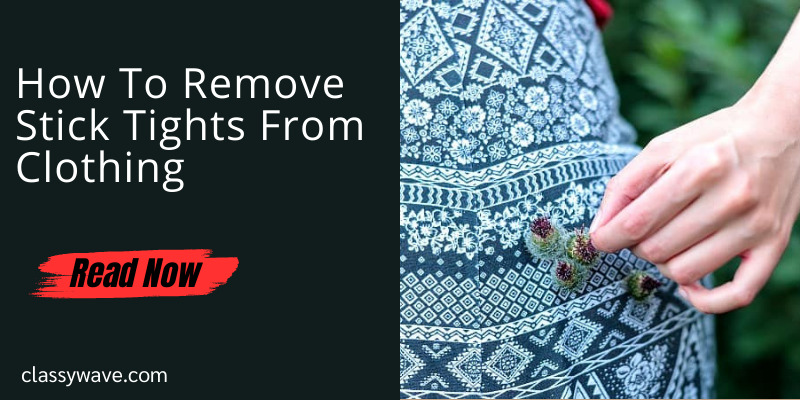How To Remove Stick Tights From Clothing-A Comprehensive Guide
Stick tights, also known as burrs or hitchhikers, are those tiny, bothersome seed pods that seem to have a knack for latching onto your clothes during your outdoor adventures. But fear not!
To remove stick tights from clothing, use duct tape, tweezers, or a soapy water and brush method. These techniques help keep your clothes seed-free and looking great.
Here I’ll provide you with a step-by-step guide on how to effectively remove stick tights from your clothing and prevent future Encounters with Stick Tights. Let’s get started.
How To Remove Stick Tights From Clothing-Step By Step
Getting Started Necessary Supplies
To effectively remove stick tights, you’ll need a few supplies to make the process more manageable.
Here’s what you’ll need:
- Duct tape
- Tweezers
- A small brush
- Soapy water
- A plastic bag
- Freezer
Now, let’s explore various methods for removing stick tights from your clothing, step by step.
Method 1: Using Duct Tape
- Cut a small piece of duct tape and press it firmly onto the affected area.
- Gently peel off the duct tape. The stick tights should adhere to the tape, making removal easy.
Method 2: Tweezers
- Use tweezers to carefully grasp the stick tights as close to the fabric as possible.
- Slowly and steadily pull the stick tights out of your clothing. Be patient and avoid excessive force to prevent fabric damage.
Method 3: Soapy Water And A Brush
- Create a solution with mild dish soap and water.
- Soak the affected area of your clothing in the soapy water for a few minutes.
- Use a small brush to gently scrub the stick tights.
- Rinse the clothing thoroughly.
Method 4: Freezing Technique
- Place your clothing with the stick tights in a plastic bag.
- Seal the bag and put it in the freezer for a few hours.
- Remove the clothing from the freezer and gently shake it. The stick tights should become brittle and easier to remove.
After Removal Cleaning And Laundering
After successfully removing the stick tights, it’s important to clean and launder your clothing to ensure it’s free from any remaining seeds or residue. Follow the care instructions on the clothing label.
Preventing Future Encounters With Stick Tights
To avoid future run-ins with these pesky seed pods, consider these preventive measures:
Appropriate Clothing
Wearing clothes with tightly woven fabrics can help prevent stick tights from attaching. Tucking your pants into your socks or boots can also minimize contact points for these clingy seeds.
Regular Lawn Maintenance
If stick tights are a recurring issue in your outdoor space, regular lawn maintenance can help control the plants that produce them. Mowing and weeding are effective strategies.
Why Are Stick Tights A Problem?
Stick tights can be a real headache for several reasons. These tiny hooks can cling tenaciously to the fibers of your clothing, making them difficult to remove.
Attempting to pull them off often results in damage to the fabric. Furthermore, they can be itchy and uncomfortable, making it crucial to get rid of them as soon as possible.
Conclusion
While stick tights can be a nuisance, you now have a comprehensive guide on how to remove them from your clothing effectively. By following the methods outlined in this article, you’ll be able to enjoy the outdoors without the annoyance of clingy seed pods.
FAQS
Can Stick Tights Damage My Clothing?
Stick tights can potentially damage clothing if not removed carefully. Using the methods described in this article will help prevent damage.
Are Stick Tights Harmful To Health?
Stick tights are generally not harmful to human health. They are a nuisance but do not pose health risks.
How can I remove stick tights from my pet’s fur?
Use a fine-toothed comb or brush to gently remove stick tights from your pet’s fur. Be patient and avoid hurting your pet in the process.
Can Pets Bring Stick Tights Into The House?
Yes, pets can carry stick tights into the house on their fur. Regular grooming and inspection can help prevent this.

